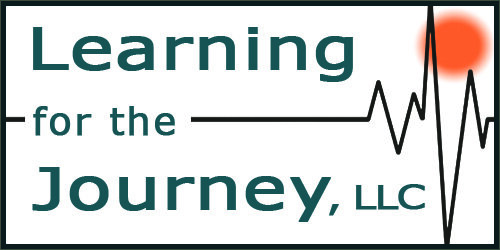Finding Our Way Through Career & Life Decisions
In my work with adults in career transition, I often see, hear, and feel them struggle with figuring out "what's next?" particularly when their experience, education, and proven skill set suggest one path, but there heart, energy, and real interests are calling them in a different direction. Do they settle for the familiar and well-worn path or do they explore a new path? Can they explore the new direction and still meet their everyday obligations? What happens if they are wrong? What happens if they fail? What happens if they get lost? Every one of these are legitimate concerns. These are the choices and dilemmas I see regularly in my work with Veterans and others, but have also experienced in my own life.
Leading Ourselves Astray
From my research, observations, and personal experience, here are five recurring and potentially negative ways of thinking which can undermine our clarity, creativity, and choosing as we navigate the transition to a different career or life phase.
Either/Or Thinking. In our Western culture, our default way of thinking tends to be dichotomous and either/or. We can either do this or that. We will either succeed or fail. We will make a good choice or a bad choice. We will do the right thing or the wrong thing. There is definitely not much nuance in this type of thinking.
Choice Overload. While one side of our nature drives us to see the world in terms of black and white, we also love our choices and options. We can see so many alternative futures for ourselves, that we find ourselves in "choice overload." Research shows that limiting our options to no more than five gives us mental space to make nuanced choices, but doesn’t cause us to throw up our hands in confusion.
Everyday Demands and Distractions. Is it easy to feel (and actually be) overwhelmed by the demands of everyday life. Commitments, obligations, endless "to do" or "ought to do" lists, smart phones, computers, the Internet, ready distraction, social expectations, etc., etc., etc. Whether imposed by others or self-made, this noise and distraction can rob us the time, space, and presence to really reflect on our lives and our futures. We feel like we can't catch our breath and just think.
Need for External Validation. We are social beings and it is natural to seek social validation for our choices. It feels good to get the pat on the head, the pat on the hand, or the pat on the back. It feels good - except when that for which we are being rewarded, reassured, and acknowledged is counter to what our wiser self, in moments of quiet self-reflection, senses is not the right thing for us - emotionally, physically, and/or spiritually.
Lack of Self-Trust. We have all done dumb things, made "what was I thinking?" decisions, rushed to judgement, misread situations and people, and talked to and about ourselves in ways that we would never do to another human being. It is called being human. It also can erode our trust in our own "inner-knower" and "wiser self."
So, when faced with an important "what's next?" decision, how do you counter black/white perspectives, choice overload, distractions and soul-sucking busyness, the constant search for validation and self-doubt? Well, I believe there are five concrete actions we can take to create some breathing room for creative, yet productive decision making.
Designing Our Way Forward
Create some space and time - time to be by yourself. Retreat from the noise, from being distracted, and from being connected. You need quiet time to think and to hear your own heart. Please don't roll your eyes. Yes, you can find time for something this important.
Write down your thoughts - on paper or in electrons. The act of writing and translating your ideas into words helps connect old and new insights/learnings. It brings clarity and creates something you can look at from different angles. The written or typed words enable you to revisit and clarify your thinking over time. It is also easier to catch either/or thinking and craft the creative "and" or alternative.
Caution! Keep these private reflections, private. Done with sincerity and with brutal self-honesty, these are fragile and personal musings. They are “works in progress” and deserve to be protected from critique until you are ready to share them with those whose opinions you trust and value.
Ask and listen - to yourself. Ask yourself some serious questions and capture your answers.
What are the most important things in your life - really? What matters to you - at this moment in time? Be brutally honest.
What do you really not want to do? This is part of narrowing the decision space. What can you take off the table (while realizing that reality sometimes imposes short-term compromises)?
In a perfect world, if you had the money and no one would laugh at you, what would you do? Open your lens. Where would you live? How would you spend your time? What would you contribute? How would you feel?
Open the lens wide and then narrow the decision space
Create 3-5 distinctly different alternative futures. Think about them and gauge they make you feel. Energized? Excited? Bored? Ho-hum? Uneasy? Afraid? Put a label on the emotions and add them to your notes. Generally there is a mix of emotions associated with each potential future. We can be (and often are) both energized and uneasy.
For each alternative, write down what you really like about it and what you don't. Be explicit and look for patterns across alternatives. Are there recurring themes, such the thread of skilled craftsmanship, the outdoors, or entrepreneurship? Can the alternative futures be combined into something even more interesting and energizing?
Take your time to look at the alternative futures and really seek to identify the conscious and subconscious dimensions. Go for a walk. Clear your head. Listen to your heart. Take a deep breath. If it is your tradition, pray. Be still.
Decide and develop an exploration plan
After careful consideration, write out the potential alternative future you are going to explore. Note, the word is "explore." Outline for yourself a plan for understanding what this new career or life path might entail and require. All work and all life-styles have pros and cons. What research do you need to do? Who do you need to talk to? What assumptions do you need to test? You may not be able to jump immediately from where you are to where you envision you would like to be and that is OK. Just start.
“A coherent life is one lived in such a way that you can clearly connect the dots between three things: 1. Who you are 2. What you believe 3. What you are doing.”


